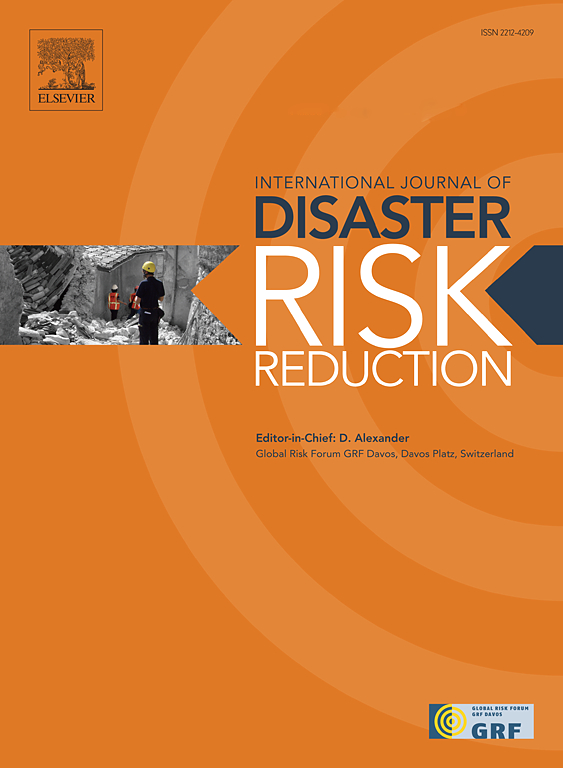A novel multi-scenario mitigation model for rainstorm flood disasters
IF 4.2
1区 地球科学
Q1 GEOSCIENCES, MULTIDISCIPLINARY
International journal of disaster risk reduction
Pub Date : 2025-02-17
DOI:10.1016/j.ijdrr.2025.105321
引用次数: 0
Abstract
Global warming induces frequent heavy rain disasters, resulting in significant casualties and economic losses. Seeking for an effective flood disaster mitigation method is crucial for mitigating the impact of disasters. Therefore, this study focuses on Nanhai district, starting with an analysis of the key disaster-causing factors for floods. Then, the Gradient Boosting Decision Tree (GBDT) is employed to quantify the contribution rates of disaster-causing factors, and determine the risk levels of the disaster. On this basis, a GBDT-based flood disaster mitigation model (GB-FDMM) is constructed by optimizing key disaster-causing thresholds. It then explores the changes in risk before and after the implementation of mitigation measures, thereby explaining the effectiveness of the FDMM under different heavy rainfall scenarios. The results indicate that: (1) the constructed GB-FDMM with threshold optimization method demonstrates an effective mitigation effect under extreme weather conditions. (2) the very-high-risk areas are mainly concentrated in the eastern region, and the GBDT algorithm can accurately evaluates the risk of flood disasters; (3) the main key disaster-causing factors are flood depth, submerge duration, population density, and GDP density. This study aims to provide valuable theoretical reference for enhancing the overall disaster reduction capacity in similar regions.
求助全文
约1分钟内获得全文
求助全文
来源期刊

International journal of disaster risk reduction
GEOSCIENCES, MULTIDISCIPLINARYMETEOROLOGY-METEOROLOGY & ATMOSPHERIC SCIENCES
CiteScore
8.70
自引率
18.00%
发文量
688
审稿时长
79 days
期刊介绍:
The International Journal of Disaster Risk Reduction (IJDRR) is the journal for researchers, policymakers and practitioners across diverse disciplines: earth sciences and their implications; environmental sciences; engineering; urban studies; geography; and the social sciences. IJDRR publishes fundamental and applied research, critical reviews, policy papers and case studies with a particular focus on multi-disciplinary research that aims to reduce the impact of natural, technological, social and intentional disasters. IJDRR stimulates exchange of ideas and knowledge transfer on disaster research, mitigation, adaptation, prevention and risk reduction at all geographical scales: local, national and international.
Key topics:-
-multifaceted disaster and cascading disasters
-the development of disaster risk reduction strategies and techniques
-discussion and development of effective warning and educational systems for risk management at all levels
-disasters associated with climate change
-vulnerability analysis and vulnerability trends
-emerging risks
-resilience against disasters.
The journal particularly encourages papers that approach risk from a multi-disciplinary perspective.
 求助内容:
求助内容: 应助结果提醒方式:
应助结果提醒方式:


